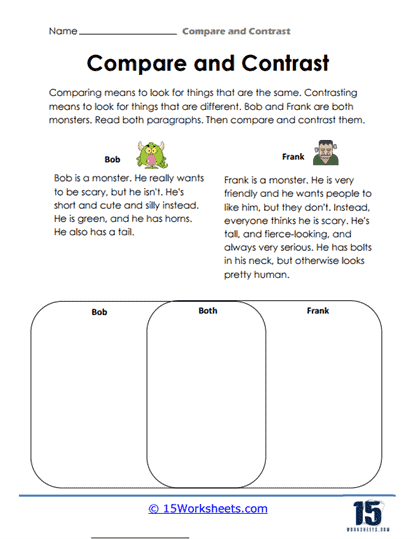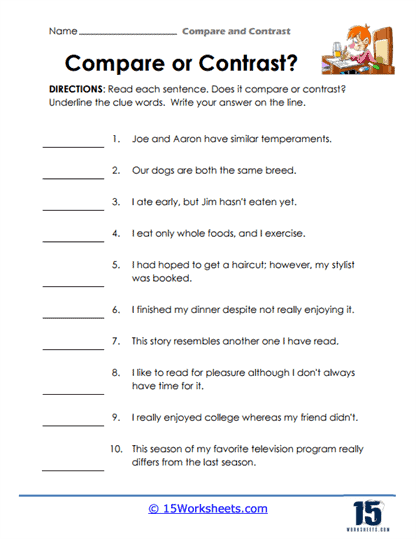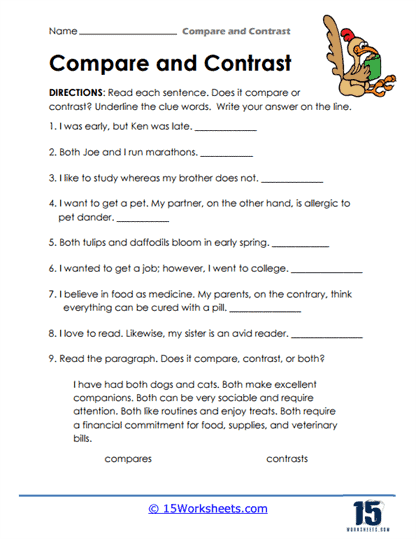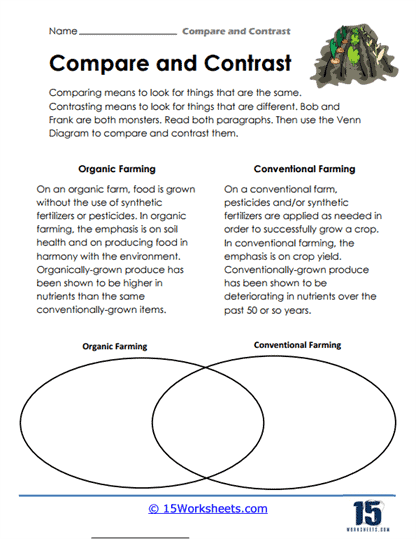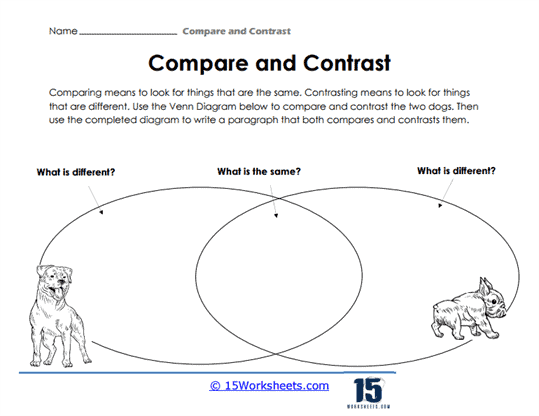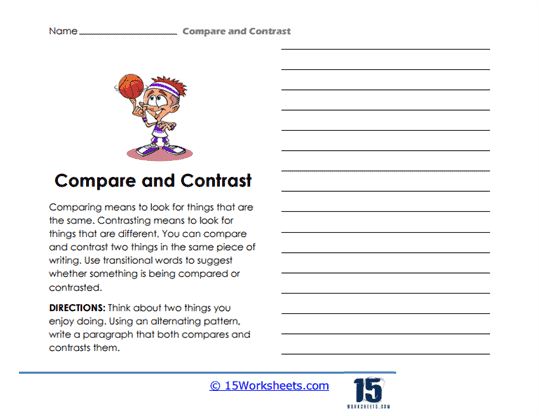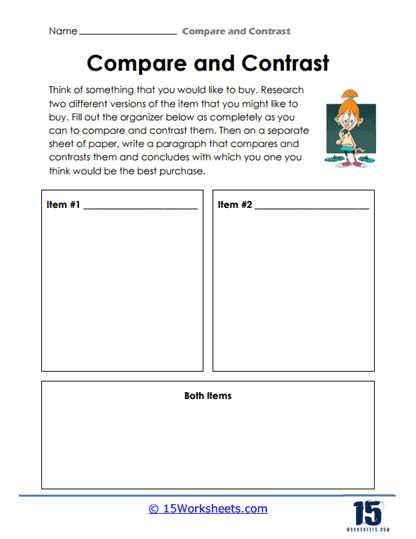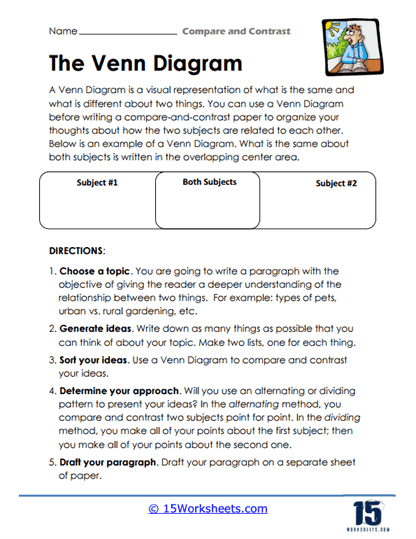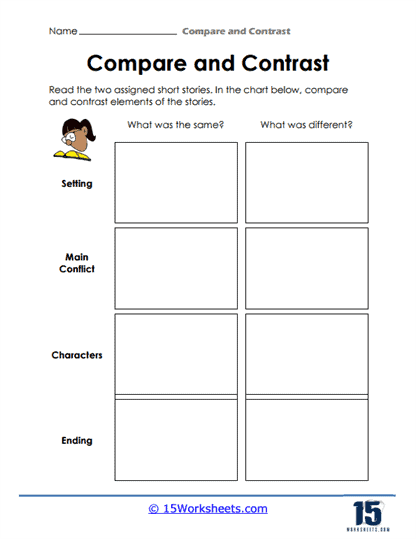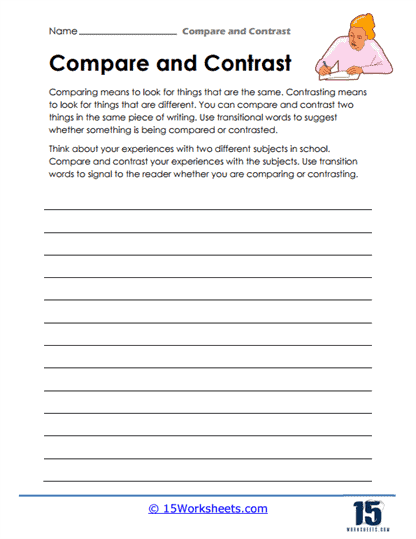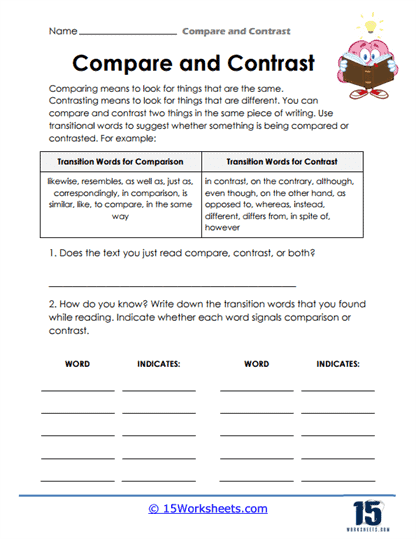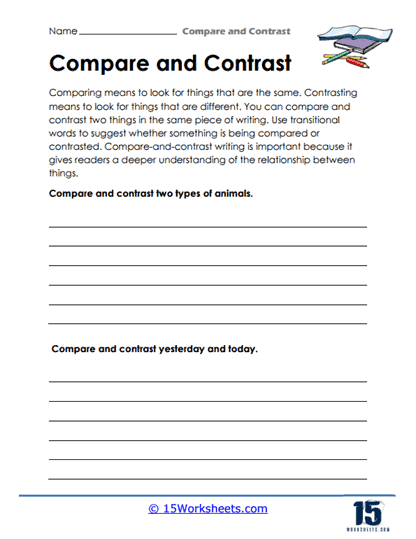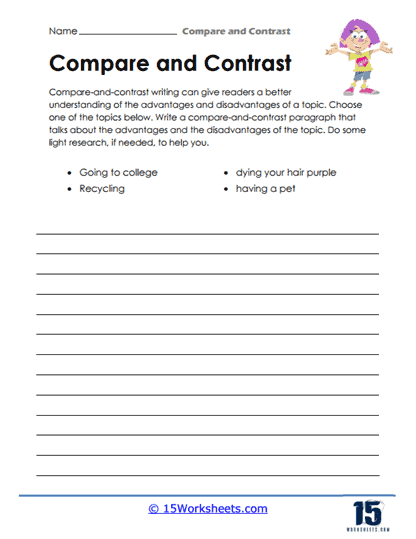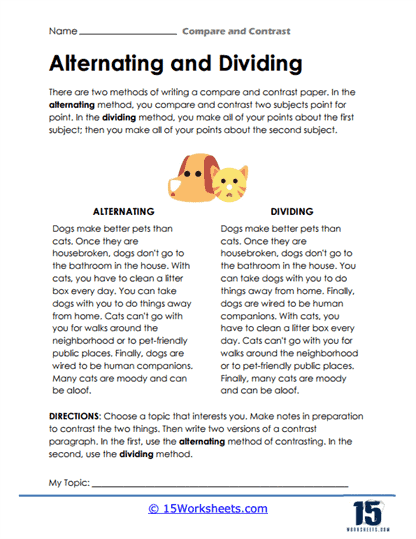Compare and Contrast Worksheets
All About These 15 Worksheets
This collection of worksheets guide students through the often complex task of recognizing and analyzing the differences and similarities between two or more subjects. The purpose of these worksheets extends beyond a mere academic exercise-they are a fundamental component in developing a student’s ability to think critically, evaluate information, and organize their thoughts with clarity. But why is comparing and contrasting such a crucial skill? What deeper benefits can students gain from honing this ability, and how can these worksheets provide a more profound understanding of analysis and evaluation?
In the shadowy land of middle school literacy, where metaphors roam wild and similes swing from sentence to sentence, a mighty collection of worksheets dares to ask the ultimate question: How are these things the same, and how are they different? This heroic saga begins with “Monsters In Focus,” where students sharpen their swords (okay, pencils) and compare two wildly different beasts. One drools, the other flies, both could eat your math homework. It’s a gentle introduction to comparison-because if you can tell the difference between a fire-breathing lizard and a marshmallow goo goblin, surely you can handle comparing real-world concepts.
Next, we dive into the clever chaos of “Spotting Clue Words” and “Navigating Sentence Nuances.” These worksheets train young minds to spot the subtle breadcrumbs authors leave behind, like “however,” “similarly,” and “meanwhile”-the literary ninja stars of comparison. Students become detectives, peeling back the layers of sentences like onions (with fewer tears), uncovering meaning and intent. This is where they begin to realize: “Wait… writers are sneaky. And I kind of like it.”
But just when things seem too serious, enter the worksheet duo of “Green Vs. Traditional” and “Paws And Reflect.” In the first, students compare eco-friendly practices to the old-school wasteful ways, and in the second, they ponder the age-old question: are cats really just plotting to take over, or are they just misunderstood? Deep, philosophical stuff. By the time students hit “My Years In School” and “Two Things I Love,” they’re asked to reflect on their own lives-comparing personal memories and preferences. It’s not just academics anymore; it’s feelings. And kids might think, “Oh wow, comparing my love for pizza and my love for naps just unlocked something in my soul.”
Then comes the intellectual gauntlet: “The Perfect Purchase,” “Comparative Analysis,” and “Short Story Showdown.” These worksheets level up the challenge, pushing students to compare products, dissect text structures, and choose between competing narratives. Do you want the shiny new bike or the slightly cheaper one with no flames on the side? Who told the better story: the time-traveling turtle or the ghost with performance anxiety? These are not just lessons in structure-they’re epic life decisions, framed by Venn diagrams and clever prompts.
The finale is a trio of emotional and philosophical crescendo: “School Experiences,” “Spotting The Shifts,” and “Animal Allies And Temporal Tales.” These worksheets help students observe shifts in tone, changes in perspective, and relationships between characters from different times. Finally, they confront “Balancing Pros And Cons” and “The Art Of Alternating And Dividing,” which sound like martial arts moves, but are really about learning to weigh arguments and dissect complex writing. By the end of the journey, students are no longer mere readers-they are compare-and-contrast connoisseurs. They don’t just see differences-they understand them. And that, my friend, is where the real magic happens.
One of the most valuable outcomes of mastering the skill of comparing and contrasting is the ability to articulate the advantages and disadvantages of a particular concept or object. As students develop this skill, they become more adept at weighing the pros and cons of various scenarios, whether they are choosing between two career paths, evaluating the merits of different scientific theories, or deciding which product to purchase. This evaluative ability is at the heart of making informed, reasoned decisions-a skill that becomes increasingly important as students grow into adulthood and face complex choices in their personal and professional lives.
As students grow more proficient in comparing and contrasting, they begin to see the interconnectedness of ideas and events, recognizing that very few things exist in isolation. This broader perspective allows them to integrate knowledge across subjects, making connections that enhance their overall understanding of the world. The skills cultivated through these exercises become a lens through which students can view not only their academic studies but also the wider world, helping them to navigate complex information, appreciate different perspectives, and communicate their ideas in a logical, coherent manner.
Methods in Comparing and Contrasting
Comparing and contrasting involves identifying similarities and differences between two or more objects, ideas, or events. There are several methods that can be used to compare and contrast, including the dividing method, the alternating method, and the Venn diagram.
The dividing method involves dividing the information being compared into separate categories based on their similarities and differences. For example, if comparing and contrasting two different sports, the dividing method would involve creating separate categories for each sport and identifying the similarities and differences within those categories.
The alternating method involves alternating between points of comparison and contrast between the two subjects being compared. For example, when comparing and contrasting two different cities, the alternating method would involve discussing one point of comparison, then one point of contrast, and continuing in this manner throughout the comparison.
The Venn diagram is a visual representation of the similarities and differences between two or more objects, ideas, or events. The diagram consists of two or more overlapping circles, with each circle representing a subject being compared. The overlapping portion of the circles represents the similarities between the subjects, while the non-overlapping portions represent the differences.
When using a Venn diagram to compare and contrast, the shared characteristics are placed in the overlapping portion of the circles, while the unique characteristics are placed in the non-overlapping portions. This helps to visually organize the similarities and differences between the subjects being compared, making it easier to analyze and interpret the information.
Overall, the dividing method, the alternating method, and the Venn diagram are all effective methods for comparing and contrasting different subjects. By using these methods, students can develop critical thinking and analytical skills, and become better equipped to make informed decisions based on evidence and logical reasoning.

